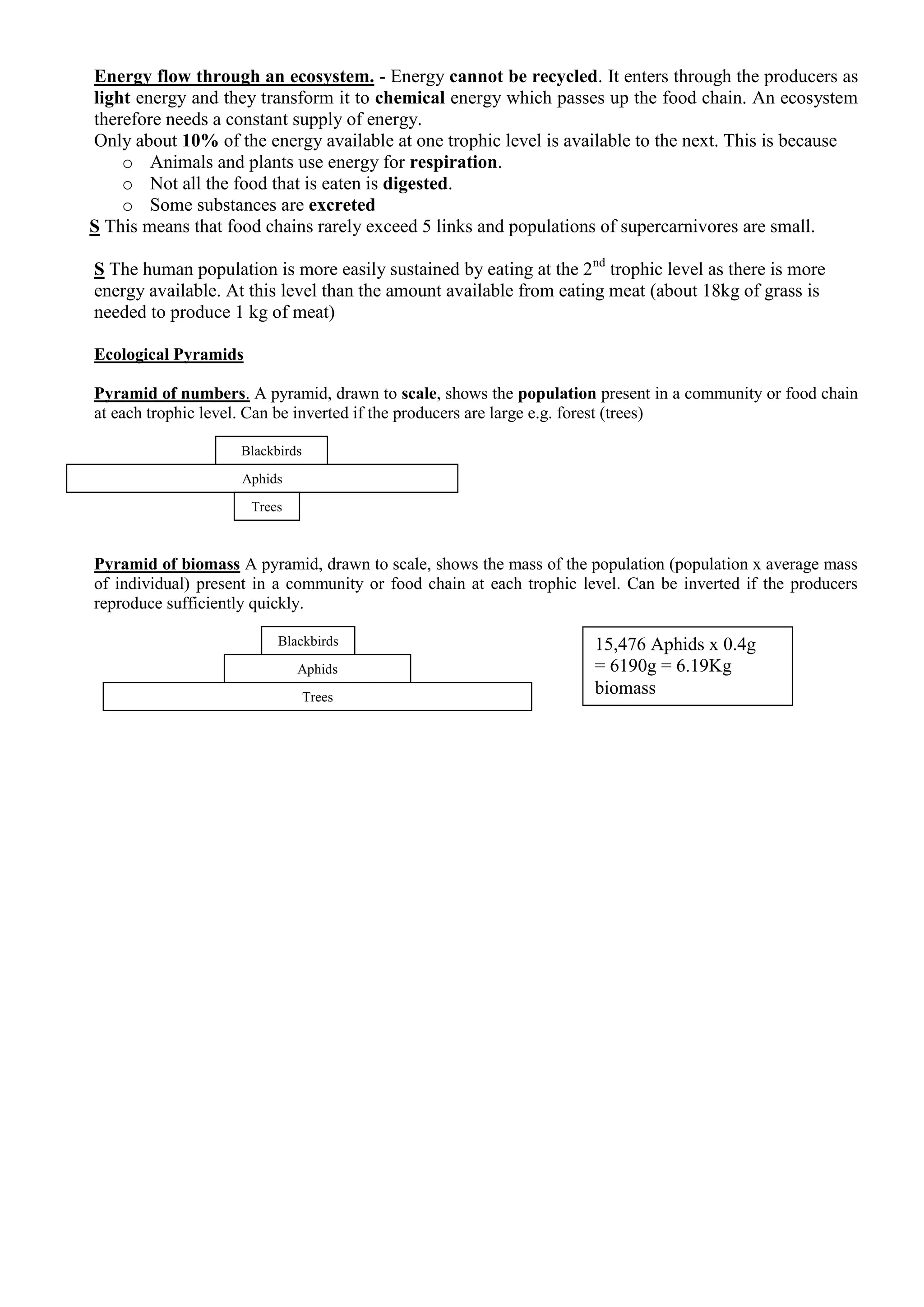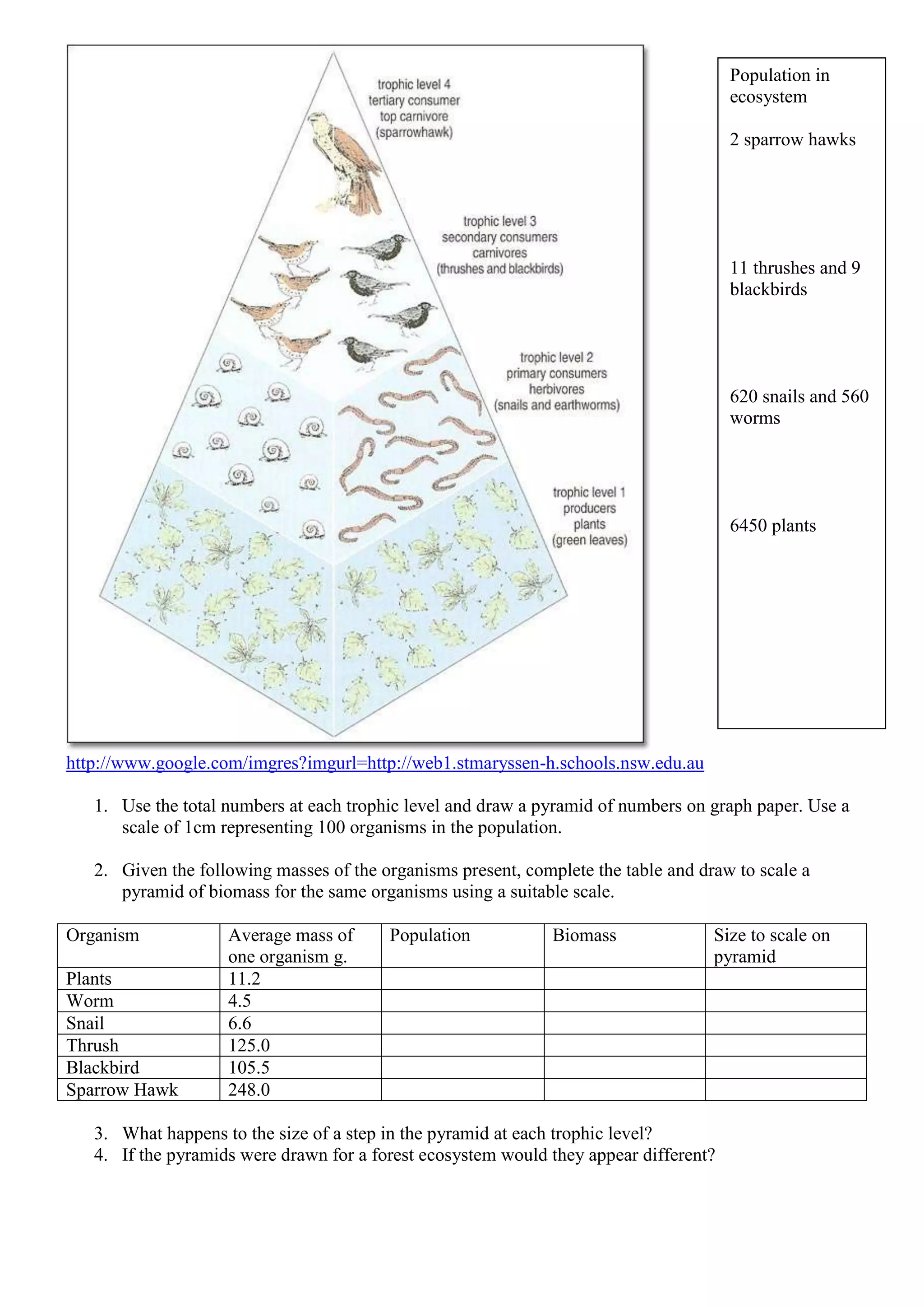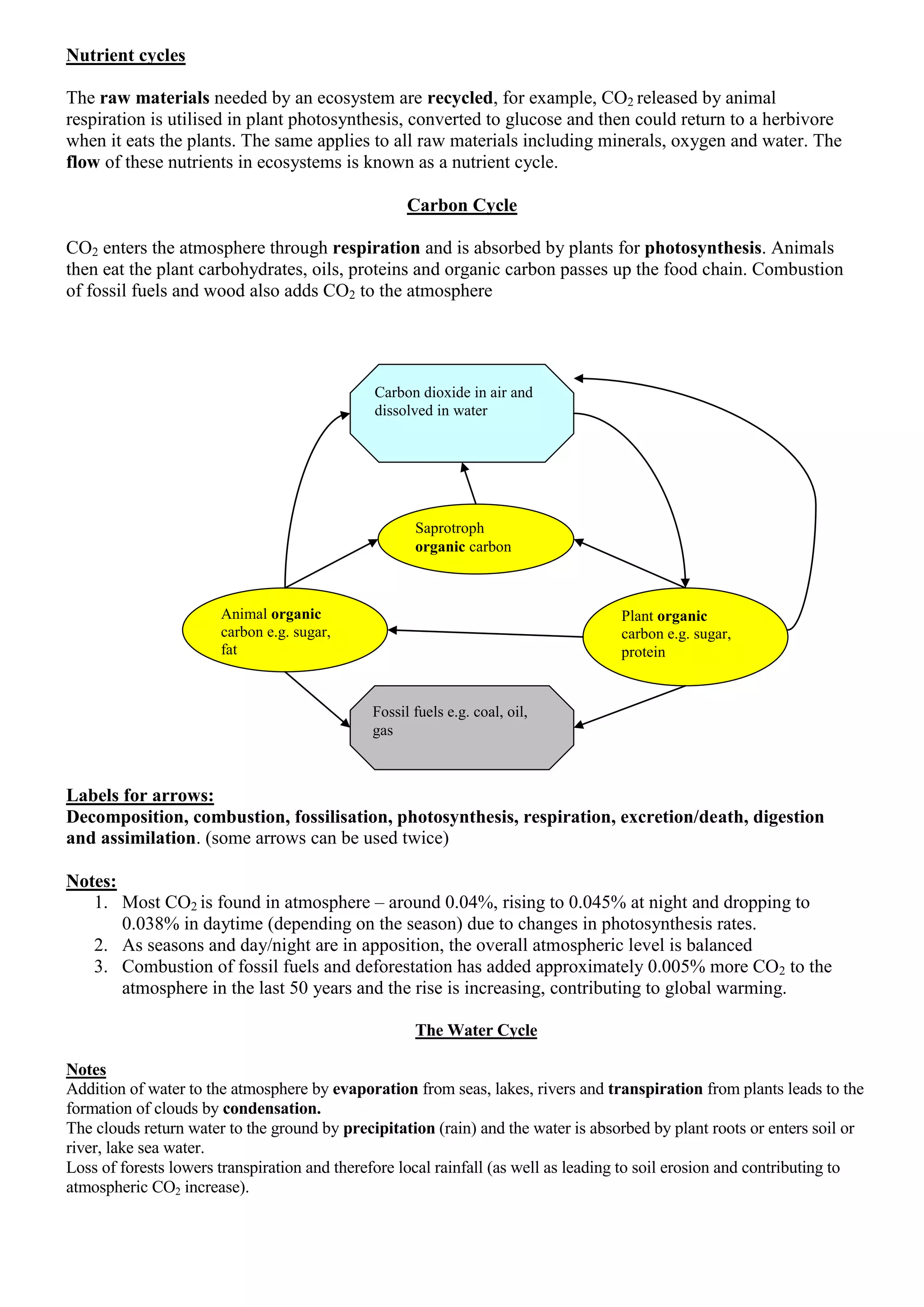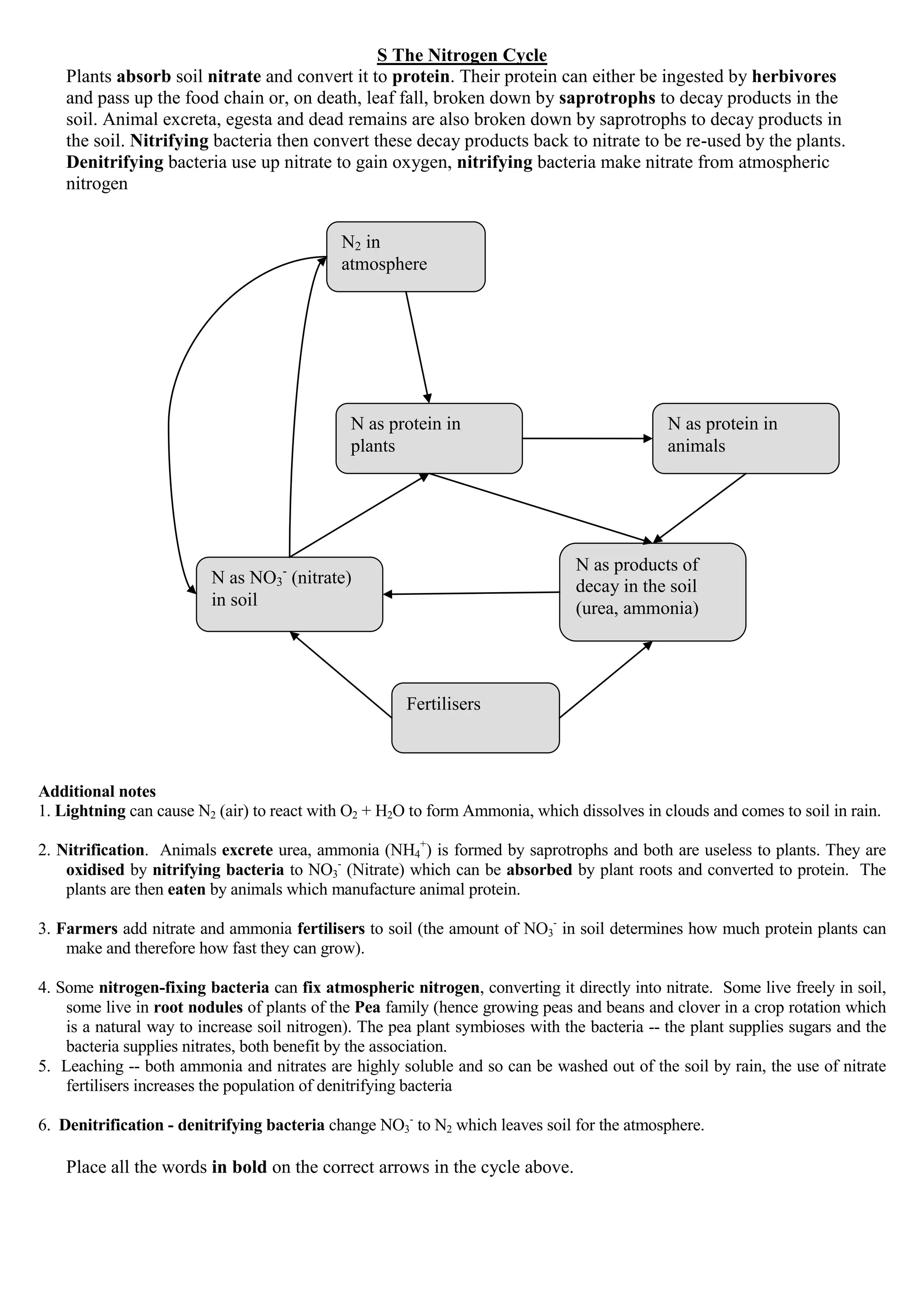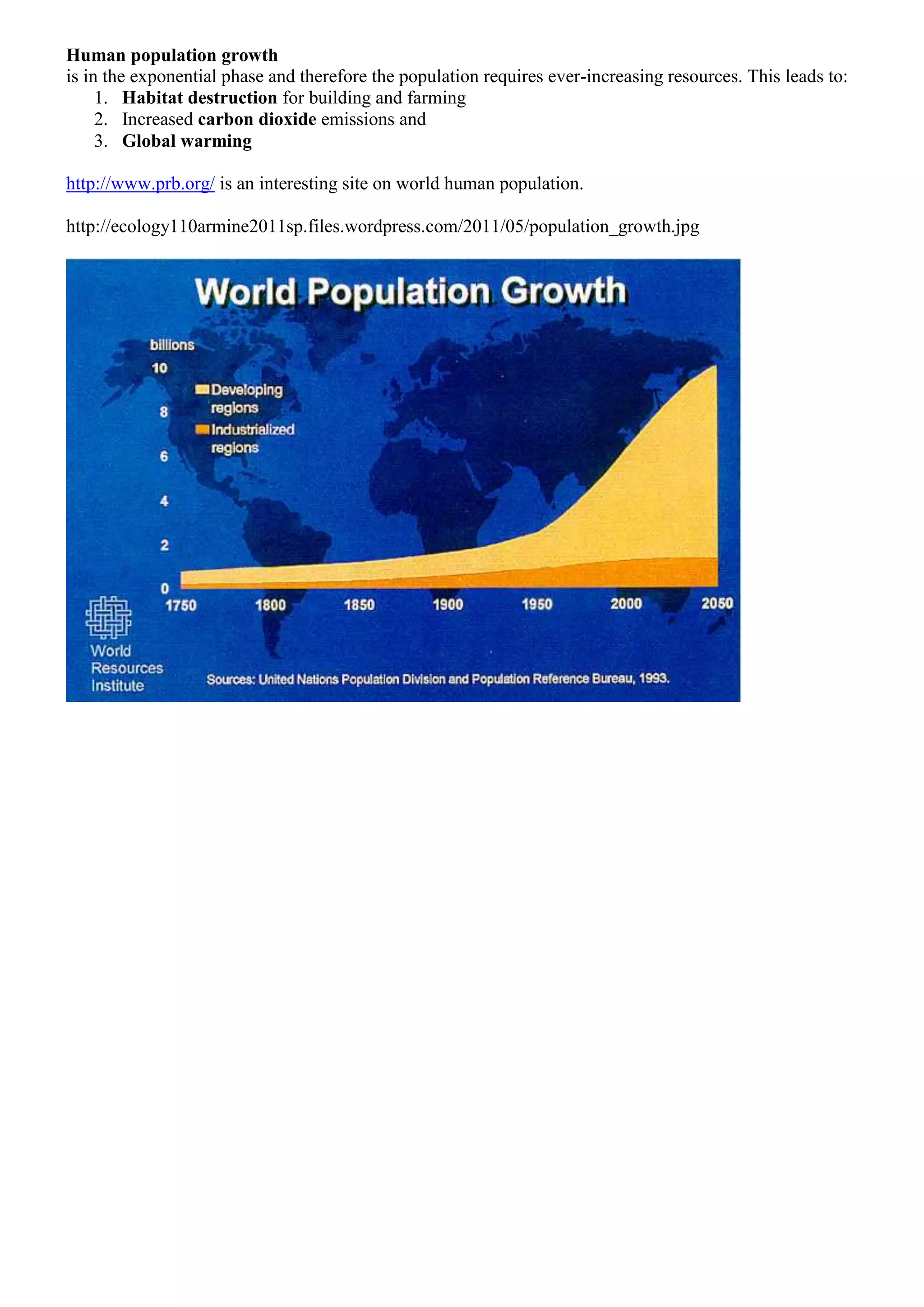This document defines key terms in ecology including ecosystem, producer, consumer, herbivore, carnivore, decomposer, food chain, food web, and trophic level. It also describes energy flow through ecosystems, noting that only about 10% of energy is transferred between trophic levels. This limits food chain length and population sizes of top carnivores. Ecological pyramids of numbers and biomass are explained, with pyramids becoming narrower at higher trophic levels as less energy is available. Nutrient cycles like the carbon, water, and nitrogen cycles are summarized, showing how nutrients like carbon and nitrogen are recycled through an ecosystem. Finally, factors influencing population growth like resources, predation, and

